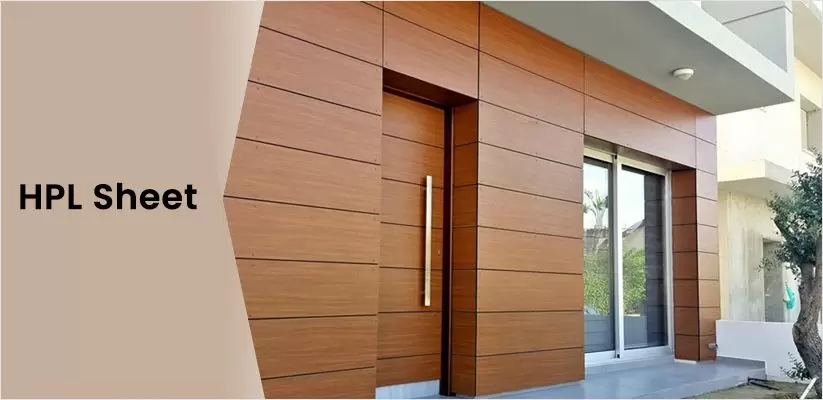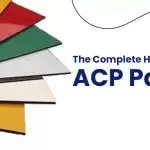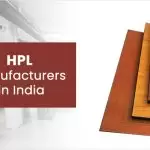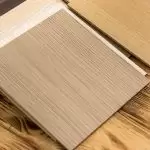In the world of interior design and construction, one material stands out for its exceptional durability, versatility, and style: high-pressure-laminate (HPL) sheets. These laminates have revolutionized the way we approach surfaces, offering a wide range of options to elevate both residential and commercial spaces. From kitchen countertops to furniture components, HPL sheets have become a go-to choice. But what exactly is HPL, and what are the different grades available? Join us as we dive into the fascinating world of HPL sheets, uncovering their secrets and exploring the various grades that make them a true design powerhouse. Get ready to unlock a realm of possibilities for your next project!
Post your Requirement
In recent years, architects, interior designers, decorators, and engineers from all over the world have come to choose high-pressure laminate sheets over other materials. They are a great option for all kinds of organizations, from residential to commercial, because of their adaptability, toughness, fire retardant, and chemical-resistant qualities.
They are created by mixing melamine resin with layers of kraft paper. Then decorative paper and an outer layer of protection are placed on top of these sheets. High-pressure laminate sheets, which are molded and cured at pressures greater than 72 kg/cm2, offer a durable, dependable surface that is simple to maintain. Here, we’ll examine what are these and what are its features set them apart from the competition.
How HPL Sheets are made?
The normal composition of HPL sheets is 60–70% paper and 30–40% thermosetting resin. Overlay paper, ornamental paper, and kraft paper make up their three layers. The ornamental paper adds visual appeal through design, the overlay paper helps to improve abrasion and scratch resistance, and the kraft paper serves as a core material to regulate the product’s thickness.
Multiple layers of kraft paper are saturated with phenolic resin to create it. Before pressing, kraft paper is covered with a layer of printed decorative paper. Under the influence of heat and pressure, the resultant sandwich is sealed (more than 1,000 PSI). Since phenolic and melamine resins are thermoset polymers, during the curing process, a cross-linking reaction turns the paper sheets into a single, hard sheet, converting the resin into plastic. It is durable because of the strong, irreversible bonds produced by thermosetting.
A composite panel is bonded to a high-pressure laminate using a variety of adhesives. Because they offer a solid, resilient, reliable, and affordable base, particleboard or MDF are the recommended substrates. These are a popular option for horizontal surfaces including floors, worktops, and desktops due to their endurance.
Understanding HPL Sheets:
High-pressure laminate sheets are composite materials made by layering multiple layers of kraft paper soaked in phenolic resin. These layers are then bonded together under high heat and pressure, resulting in a sturdy and robust sheet. The top layer of HPL is decorative and can mimic various textures, patterns, and colors, while the core layers provide strength and stability.
Applications of HPL Sheets
These are just a few examples of the vast range of applications for HPL sheets. With their durability, versatility, and aesthetic appeal, HPL sheets have become an integral part of modern interior design and construction practices. The use of HPL sheets is extensive and spans across various industries and applications. Here are some common areas where HPL sheets are frequently employed:
-
Interior Design and Decor:
-
- Kitchen Countertops:
HPL sheets are commonly used as a durable and stylish surface for kitchen countertops, offering resistance to heat, stains, and scratches.
-
- Cabinets and Furniture:
HPL is a popular choice for cabinet surfaces, drawer fronts, and furniture components, providing versatility, a wide range of colors and patterns, and resistance to wear and tear.
-
- Wall Panels:
HPL sheets can be used as decorative wall panels, adding texture, color, and durability to interior spaces.
-
Commercial Spaces:
-
- Office Furniture:
HPL sheets are utilized for desks, tables, and workstations in office settings, offering a robust and visually appealing surface.
-
- Hospitality and Retail:
HPL sheets are commonly used in hotels, restaurants, and retail stores for countertops, display fixtures, and wall cladding, as they can withstand high traffic and maintain their aesthetic appeal.
-
Healthcare and Laboratory Facilities:
-
- Hospital Surfaces:
HPL sheets are employed for hospital countertops, cabinetry, and examination tables, providing a clean and bacteria-resistant surface.
-
- Laboratory Workstations:
HPL is used for laboratory workstations and benches, as it can withstand chemical spills, stains, and abrasions.
-
Education and Institutional Settings:
-
- School Furniture:
HPL sheets are used for desks, tables, and chairs in classrooms and other educational settings, offering durability and resistance to daily wear and tear.
-
- Locker Systems:
HPL is employed in locker systems for its strength and ability to withstand frequent use and potential moisture exposure.
-
Exterior Cladding and Facades:
-
- Building Exteriors:
Certain grades of HPL sheets, specifically designed for exterior use, are used as cladding materials for buildings. These sheets provide weather resistance, UV stability, and design versatility, allowing architects to create visually striking facades.
-
Transportation:
-
- Public Transport Interiors:
HPL sheets are used in the interiors of buses, trains, and airplanes, providing durability, easy maintenance, and design options for seating, paneling, and other surfaces.
-
Retail Displays:
-
- Visual Merchandising:
HPL sheets are employed in retail displays, including shelving, fixtures, and signage, offering durability and customization options.
-
Exhibition Stands and Booths:
-
- Trade Shows & Events:
HPL sheets are utilized in exhibition stands and booths for their ability to create eye-catching displays and withstand heavy use.
These are just a few examples of the broad applications of HPL sheets. The versatility, durability, and aesthetic possibilities of HPL make it a favored material in numerous industries, contributing to functional and visually appealing spaces.
Introducing HPL Sheet And Its Price – Explained!!
The cost of HPL laminate sheets may vary owing to diverse factors such as the quality of the sheet, the provider you opt for, thickness, application, and design of the sheet. Let us discuss each of the points one by one. First off, the two manufacturers’ sheet prices may differ. The pricing could differ even though both supplier’s products have the same thickness, size, design, etc.
The second is quality. As with any product, you may anticipate higher quality if you spend more on it. Therefore, the quality of the HPL sheet affects its pricing as well. The thickness of the sheet is another factor. The price of your sheet may vary somewhat depending on a slight variation in thickness, even if the quality, dimensions, and design remain the same. For instance, the prices of HPL sheets 4mm and 8mm won’t be the same.
How Much Does HPL Sheet Cost in India?
The HPL sheet cost also matters if you plan to use it indoors or outside, as this will affect the dimensions, thickness, consistency, and other characteristics of your HPL sheet. The exterior HPL sheet may not match the internal one.
Last but not least, the HPL sheet design you opt for has a big impact on cost. Sheets come in a multitude of styles, colors, and designs. Customization or selecting a high-quality collection may come at an extra expense or cost.
Understanding HPL Grades
HPL grade refers to the classification or categorization of High-Pressure Laminate (HPL) sheets based on specific characteristics, properties, and intended uses. Different grades of HPL are designed to meet various requirements and performance standards, allowing for versatility and suitability in different applications. Some common HPL grades include Standard Grade (S-Type), Post-Forming Grade (P-Type), Flame-Retardant Grade (FR-Type), Chemical-Resistant Grade (CR-Type), and Exterior Grade (X-Type).
Types Of HPL Grades
HPL sheets are available in different grades, each with its unique properties and applications. The grades are categorized based on factors such as thickness, surface finish, and intended use. Let’s explore some of the commonly used HPL grades:
-
Standard Grade (S-Type):
Standard-grade HPL is the most basic type and is suitable for general purposes. It typically has a thickness ranging from 0.6mm to 1mm. S-type HPL sheets are commonly used in residential settings, such as kitchen countertops, cabinet surfaces, and furniture components. They offer moderate resistance to heat, impact, and moisture.
-
Post-Forming Grade (P-Type):
Post-forming-grade HPL is designed specifically for curved and rounded surfaces. With a thickness ranging from 0.8mm to 1mm, P-Type HPL sheets can be heated and bent without compromising their integrity. This makes them ideal for applications like curved kitchen countertops, reception desks, and furniture with rounded edges.
-
Flame-Retardant Grade (FR-Type):
Flame-retardant-grade HPL sheets are engineered to meet stringent fire safety standards. These sheets have additional fire-resistant properties, making them suitable for environments where fire protection is crucial. FR-Type HPL is commonly used in public spaces, healthcare facilities, transportation interiors, and other areas that require compliance with fire codes.
-
Chemical-Resistant Grade (CR-Type):
Chemical-resistant HPL sheets are designed to withstand exposure to various chemicals and solvents. These sheets have a surface that is highly resistant to staining, fading, and degradation caused by chemicals. CR-type HPL is commonly used in laboratories, healthcare facilities, and industrial settings where frequent contact with chemicals is expected.
-
Exterior Grade (X-Type):
Exterior-grade HPL sheets, also known as X-Type, are engineered to withstand outdoor elements and harsh weather conditions. These sheets are UV-resistant, moisture-resistant, and can withstand temperature fluctuations. X-Type HPL is used in exterior cladding, outdoor furniture, balconies, and other applications exposed to direct sunlight and moisture.
HPL Grades
- Based on thickness
- Based on Usage
- Based on the manufacturing process
- Based on the Surface Finish
This product comes in a variety of sorts or grades that are designed to meet certain performance criteria.
Based on thickness:
- Laminate sheets: Laminate sheets, a popular surface material for cabinets, wall panels, and furniture, may be attached to a variety of substrate materials with strong-strength adhesives. They come in a range of thicknesses, from 0.6 mm to 1.5 mm.
- Compact laminates:
These are made from many layers of premium kraft paper that have been coated with resin, dried, and then laminated on both the top and bottom. All three layers are crushed and baked to create compact laminates, which result in incredibly durable surface material.
Based on Usage:
- Decorative laminates:
These are frequently utilized in luxurious residential homes and opulent business settings. They are readily available in a broad variety of colors, styles, and textures.
- Industrial laminates:
These are more durable variants of ornamental ones, without too many cosmetic subtleties, and are frequently used in hospitals, schools, industrial facilities, and numerous other locations with special demands. They are more concerned with meeting the demands of the setting in which they are employed.
Based on the manufacturing process:
- High-Pressure Laminate (HPL): These are made by pressing the decor paper firmly against the craft paper, giving it a very durable character.
- Low-Pressure Laminate (LPL): This is referred to as a low-pressure laminate since it is created by using pressure to press various types of decorative paper to particle board, plywood, or another foundation.
Based on Surface Finish:
-
Solid: Laminates with a solid finish are those that have a single, consistent color. These are the most fundamental and popular kinds on the market, and they are widely employed in commercial settings and group housing facilities.
- Metal: For a sleek metal effect, these may be utilized in both homes and businesses.
- Wood: Wood is a luxurious material renowned for its unparalleled attractiveness. However, it has several downsides of its own, including being susceptible to dampness and termites. By choosing wood ones, you may have the premium-end appearance of wood without the hassles.
- Abstract: They have a distinctive appearance and feel thanks to patterns like those seen in granite, marble, natural stone, and other abstract designs.
Common Usage of HPL Sheets
- Industries: Due to their strong resilience to wear and tear and ability to support enormous loads, industries utilize this material in a variety of industrial applications.
- Hospital and pharmacy: In hospitals and restaurants, where cleanliness is of the highest concern, these are frequently utilized. Bacteria and other diseases can’t grow on their surface.
- Laboratory: In dust-free settings for circuit board production, electronic assembly, and other workspaces including hospitals, doctor’s offices, and labs, electrostatic dissipative are frequently employed.
- Schools: The simplicity and robustness of this material are perfect for use in schools and other institutions. These have a long life and stay intact in heavy-traffic areas.
- Toilet cubicles: Since this product is quite easy to clean and maintain, it is widely used in private as well as public Toilet cubicles, changing rooms, washrooms, and washing areas.
- Commercial building: Large professional offices and other corporate settings where a subdued yet sophisticated appearance is required frequently utilize this material with a matte surface.
- Shops: Gloss-finished panels are typically used in clubs, trade shows, showrooms, shops, kitchens, etc. It makes furniture more lustrous and is simple to clean.
- Public buildings: It is considered one of the most durable and strong decorative surface materials. It performs well in public buildings.
- Public bathrooms: Panels with a single solid hue are known as solid-colored laminates. On counters in the kitchen and bathrooms, they are useful.
Does the HPL Sheet have interior usage?
- Flooring: This material with a Wood grain finish or tile-like finish is made with a grain pattern that mimics genuine wood.
- Cubicles: Along with durability and harsh atmosphere resistance, this modern and stylish product is used to make cubicles and cabinets.
- Display: From display boards to standees, they can be used for spaces that need an aesthetically organized look and background.
- Exterior balcony: This panel neither becomes too hot during summers nor too cold during the winters which makes it suitable for balconies, patios, and gardens.
- Furniture: Furniture elements including beds, couches, chairs, tables, etc. are frequently made out of this material. Its nature allows it to be post-formed, therefore different furniture can be made using it.
- Doors: It is flexible to install at various places. It can also be altered or tailored to different sizes and shapes to fit every structure.
- Window Sills: Since this material can be tailored to any shape or size, it can be used easily for making window sills, frames, or even doors.
- Facade: Manufactured with modern, stylish, and innovative designs this material looks good in your favorite spaces like home facades.
- Stairs: These are built to bear the weight of heavy pressure objects which makes stairs impact, scratch, and abrasion-resistant.
- Ceilings: The ease of usage, flexibility, and versatility of this product make it perfect for use for false ceilings as well as sound-proof roofing.
Does HPL have water-resisting properties?
High-pressure laminate has improved recital properties which makes it one of the strongest and most elaborate surfaces. It is a strong, long-lasting, and water-resistant material which makes it a versatile and waterproofing product.
What is the average lifespan of HPL sheets?
Premium-quality HPL sheets often last for more than ten years. They have a long lifespan due to characteristics like fire and abrasion resistance. However, the application has a significant impact on the precise lifespan of this product.
Why choose the HPL sheets from McCoy Mart?
McCoy Mart is an online platform where you can purchase a wide range of products. Whether you’re buying items for home renovation or any other product, you could save more money if you have a pro account. It provides a large selection of brands and goods to choose from. If you want to purchase genuine, premium goods at an affordable price, it’s a fantastic option to consider.
FAQ’S
Q:1 What is the HPL Material for the gate?
A:1 Built from eco-conscious layers of compressed fibers, HPL (High-Pressure Laminate) material for gates is the environmental shield, standing tall as a sign of strength, durability, and environmental responsibility, assuring entrances with a variety of sustainable technology and resilience.
Q:2 What is the thickness of the HPL sheet for any gate?
A:2 When it comes to protecting entrances with a life of accuracy, durability, and toughness, a gate’s HPL sheet and viscosity normally range from 6 to 12 millimeters, which is like a guardian’s measured gait.
Q:3 Are HPL Materials Durable?
A:3 HPL materials are renowned as the timeless sentinels of durability and sturdiness, woven from eco-friendly fibers and fortified through compression, they stay as guardians of longevity, durability, and style in the realm of architectural design.























Post A Comment